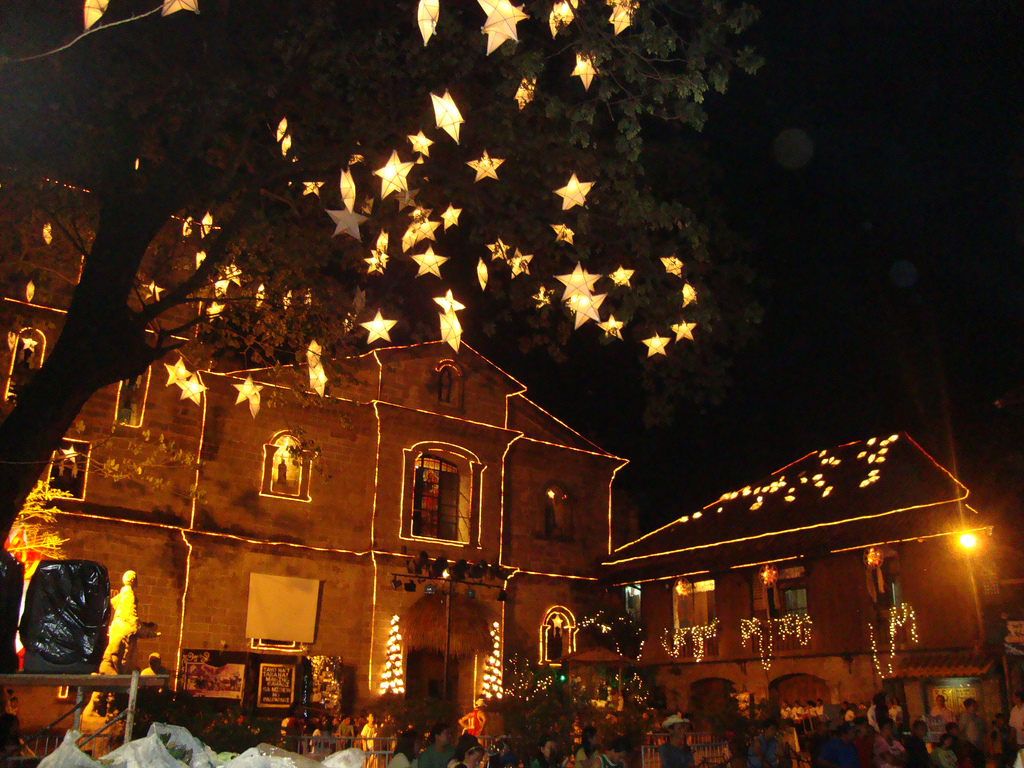Pinoy Holiday Traditions To Look Forward This December
Share

December is coming into our hearts boys and girls, and what more can you look forward to this coming month than celebrating the holidays!
The last month of the year features festive of activities and long-time traditions to look forward to. And as exciting as it may sound, we can’t wait to just seclude ourselves with the joy of the yuletide season. So, get the holiday break you deserve and mark the calendars with these traditions below:
The early dawn mass tradition: Simbang Gabi
Beginning at the 16th of December all the way to the 24th, this mass tradition has dated back from our country’s colonial times. The nine-day mass, by tradition, usually begins at 4 in the morning, just right before the crack of dawn. Why such an early tradition? Well, to say the least, this tradition traces back to Pope Sixtus V who ordered that the mass be heard before sunrise since farmers need to be in fields right after as it’s the harvest season. And of course, it won’t be complete without eating puto bumbong and bibingka after the mass.
The midnight mass tradition: Misa de Gallo (Rooster’s Mass)
On the last day of Simbang Gabi, which falls on the eve of Christmas, the name of the mass is called Misa de Gallo instead. That’s Spanish for Rooster’s mass.

The traditional play: Panunulúyan
You may have come across and watched this traditional play in different provinces or at schools during programs. Traditionally called “Panunuluyan,” “Pananawagan,” or “Pananapatan,” this play modeled after the Spanish Las Posadas depicts the journey of Joseph and the pregnant Virgin Mary seeking a place to stay for the night.

As we all know the famous story of the birth of Christ, this traditional play is usually performed after dark. The play re-enacts the whole journey, getting cruelly turned away from one inn to another and the finally Joseph and Mary make their way to the parish church where a replica of the stable has been set up and the birth of Jesus is celebrated at midnight with the Misa de Gallo.
The holiday eve feast tradition: Noche Buena
The celebration wouldn’t be complete without the traditional family dinner. Staple dishes served for the main course include: lechón, pancit for long-life, sweet-tasting spaghetti, the favorite fried chicken, the luscious hamón, quezo de bola, the hot porridge arróz caldo, lumpia, relyenong bangus (stuffed milkfish), adobo, steamed rice, and various breads such as pan de sal. And desserts are usually served with úbe halayá, bibingka,fruit salad, various rice- and flour-based cakes, ice cream, pastries and fruits, while popular beverages such as tsokolate as well as coffee, soft drinks, wine, beer, and fruit juices accompany the feast.
The Decoration tradition: Christmas Lantern or Parol
Believed to have originally been used by worshipers to light their way to church in the early morning, as well as to symbolize the Star of Bethlehem, this popular yuletide decoration that’s as iconic and emblematic as Christmas trees in the West is the colorful star-shaped lantern, the Parol. And Filipinos adorn their homes with a parol which has obviously become a symbol of a Filipino holiday spirit.

The Holy display tradition: Belen or Nativity Set
Another traditional Pinoy Christmas symbol seen almost anywhere is the Belen or nativity set. This is a tableau depicting the Birth of Christ. It is coined from the Spanish name for Bethlehem, Belén, which depicts the infant Jesus in the manger, surrounded by the Virgin Mary, St. Joseph, the shepherds, their flock, the Magi and some stable animals, and is surmounted by an angel, the Star or both.

This display can come in many forms from pint-sized to human sized figurines across churches, schools, parks and sometimes office buildings. Tarlac City, Tarlac is known as the Belén Capital of the Philippines holds the annual “Belenísmo sa Tarlac”. It is a belén-making contest which is participated by establishments and residents in Tarlac.
The gift of giving tradition: Aguinaldo
We’ve heard of the song carolers sing: “Sa Maybahay ang Aming Bati”! And what’s more to love than receiving the Aguinaldo? An aguinaldo is Spanish for Christmas bonus. This is a Christmas gift, usually money in the form of fresh peso bills in envelopes. Traditionally, children would visit their elder relatives godfathers and godmothers to ask for an aguinaldo. So, basically, the elders are prepared to hand out their aguinaldo.
Are you prepared with your holiday budget? Are you ready to hand out your aguinaldos? Well, if you still worry your budget, you can always get extra cash from PawnHero. It’s your online pawnshop that provides cash loans through pawning items more than just jewelry. So, start now by downloading the PawnHero app or visit the PawnHero website to learn more.
In any case, you can also visit Marketplace.ph and find presents to surprise this holiday. The online shop features authentic an pre-loved items such as gadgets, electronics, luxury watches, designer bags and many more, one for each member of your family.
Don’t forget to like PawnHero Philippines and Marketplace by PawnHero on Facebook to get updates, join games and win cash prizes.

